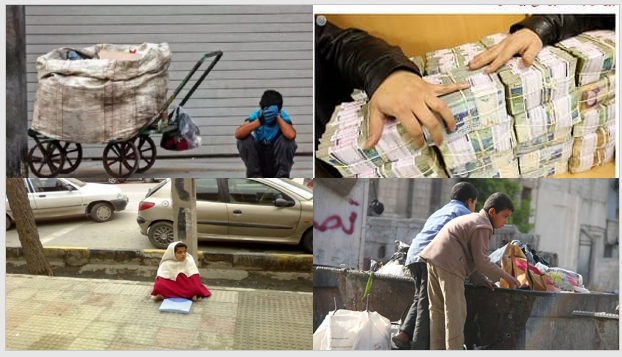
A striking example of these hardships is the escalating crisis in food supplies, particularly affecting the poor and low-income population. Despite their tireless efforts, working multiple shifts in various jobs, Iranian families find themselves struggling to afford even the most basic food items.
Renowned Iranian economist Hoinssein Raghfar, in a telling interview with the state-run Fararu website, highlighted the alarming nature of this crisis. According to Raghfar, the average Iranian household now spends 65% of its income on food, a drastic increase from the previous 16% in Tehran and 25-26% in other urban areas.
Even more concerning, this figure used to be only 35% in rural areas. This staggering statistic is a clear indicator of the deteriorating economic situation in Iran.Raghfar further elaborated on the dire state of nutrition among Iranian households. The annual meat consumption has alarmingly decreased from three kilograms to just two.

The crisis extends beyond food and affects education as well. The Fararu website notes a stark increase in school dropouts among children from low-income families, a direct consequence of their inability to afford basic educational expenses. Official regime statistics reveal a drastic reduction in meat consumption over the years. In the 2010s, the per capita annual meat consumption was over ten kilograms, a figure that has plummeted to approximately 2.6 kilograms as of December 2023.
Compounding the crisis is the fact that the purchasing power of Iranians has significantly diminished. A wage-earning head of a family of four must now spend about 65% of their income on a minimal basket of food items. Since 1980, the purchasing power of minimum wage earners has decreased by over 65%, pushing the real minimum wage to its lowest in 28 years.
راهپیمایی اعتراضی #کارگران گروه ملی صنعتی فولاد #اهواز
همشهری به هوش باش ماکارگریم نه اوباش
یکشنبه ۸ بهمن ۱۴۰۲ pic.twitter.com/oRFeFRT8RQ— fereshteh (@fereshteh531) January 28, 2024
Amidst these escalating challenges, the plight of Iranian workers and vulnerable communities is becoming increasingly dire. The current regime’s inability to address these fundamental issues points to a growing sentiment that the only viable solution may lie in a complete political overhaul. The Iranian populace, burdened by an unsustainable economic system, sees the overthrow of the current regime as a potential path to relief from their ongoing struggle for basic necessities.

MEK Iran (follow us on Twitter and Facebook), Maryam Rajavi’s on her site, Twitter & Facebook, NCRI (Twitter & Facebook), and People’s Mojahedin Organization of Iran – MEK IRAN – YouTu







